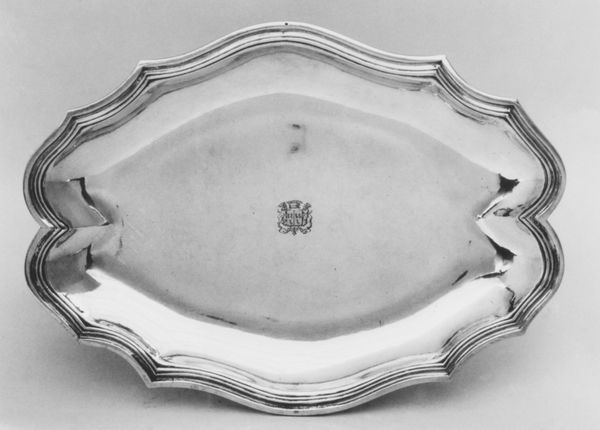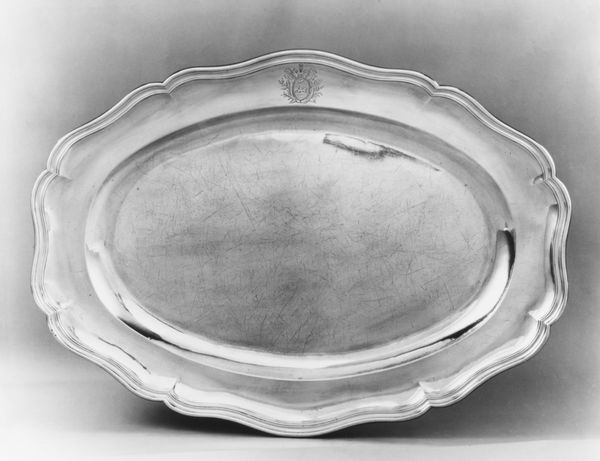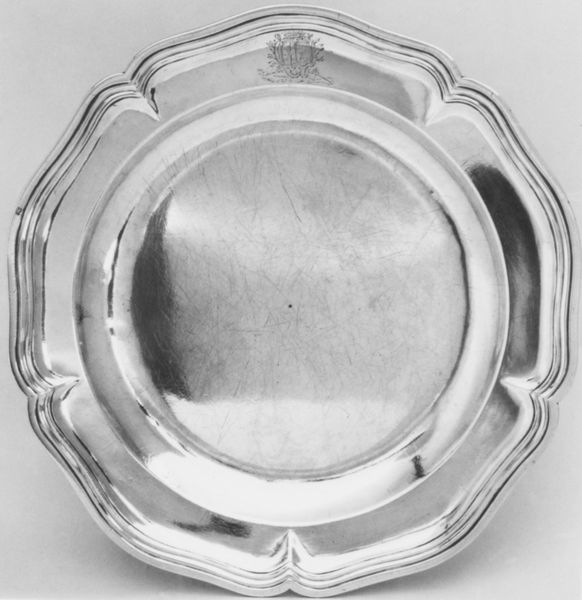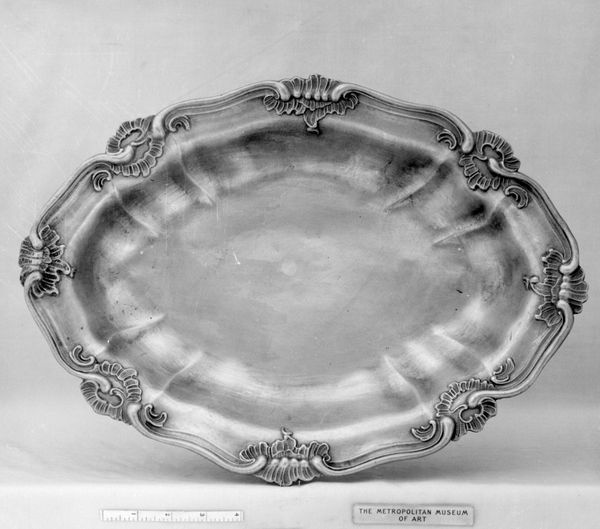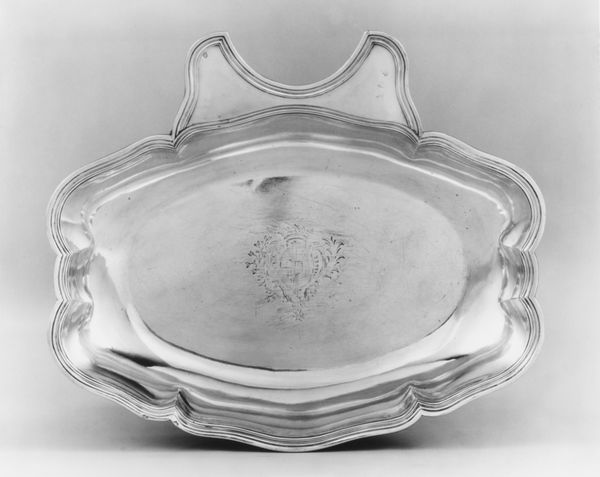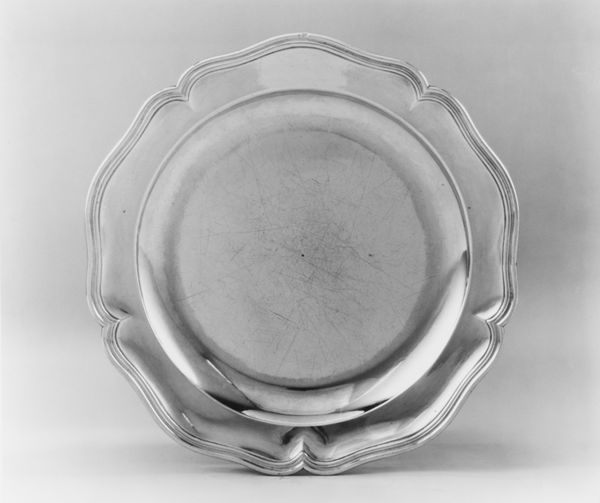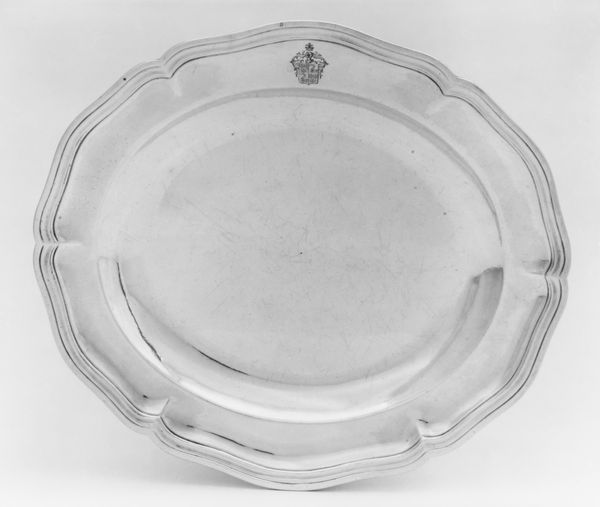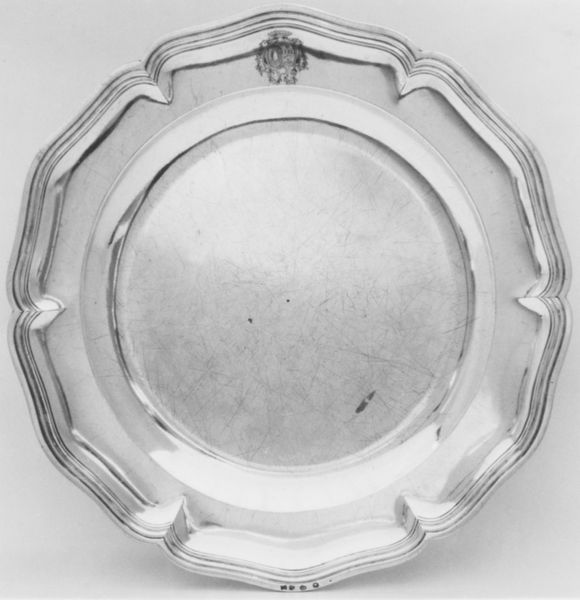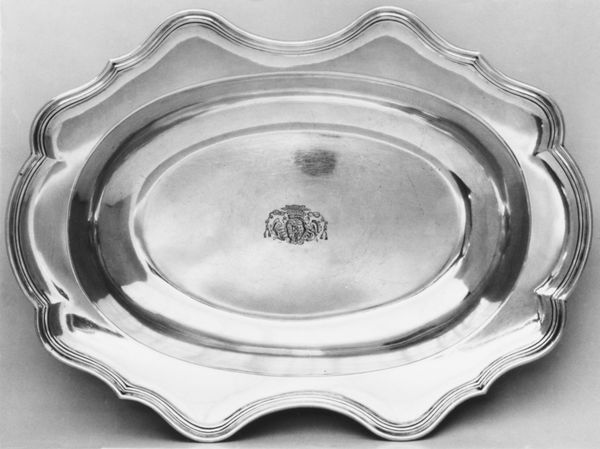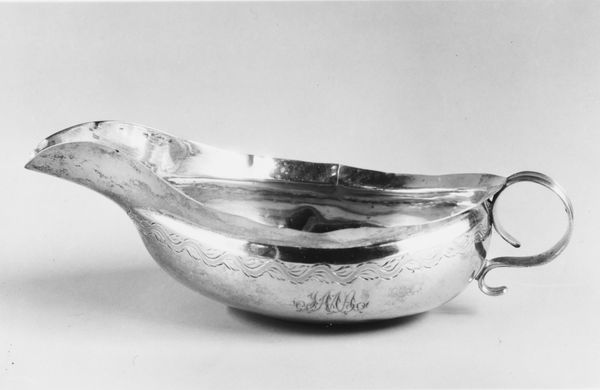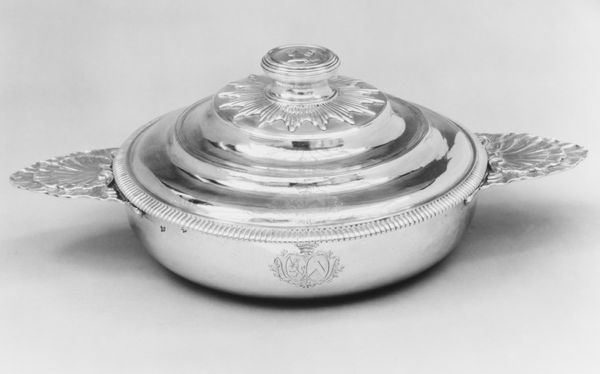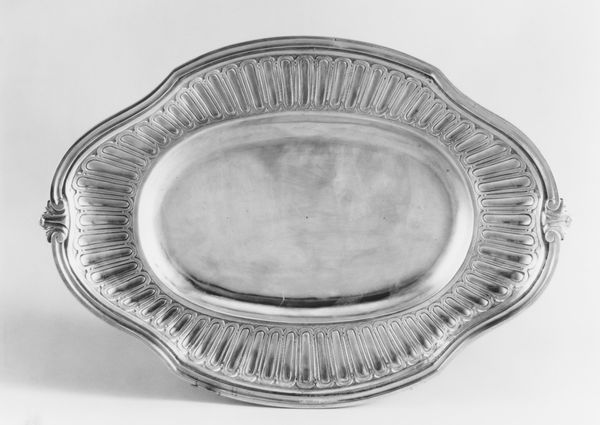
silver, metal, sculpture
#
silver
#
metal
#
sculpture
#
decorative-art
#
rococo
Dimensions: Overall: 1 × 10 × 14 3/4 in. (2.5 × 25.4 × 37.5 cm)
Copyright: Public Domain
Curator: What an elegant piece. We're looking at an oval dish, created between 1761 and 1762, by Jacques III Rondot. It's crafted from silver and you can find it at the Metropolitan Museum of Art. Editor: My immediate reaction is that it feels incredibly formal, even austere, despite its ornate edge. It gleams, but it also seems somehow cold. The highly polished surface really emphasizes the smooth curve of the dish. Curator: Yes, it's fascinating how that polished silver contributes to its visual power. Silver has long held significance as a symbol of purity and value. In many cultures, including those of the period, the reflective qualities are associated with lunar cycles, intuition and mirroring the soul. Editor: Absolutely, and considering its function as a serving dish, the reflection probably had a very practical use as a subtle reminder of your dining etiquette, though such opulence certainly carries a strong message of social status as well, doesn't it? The aristocracy, showcasing wealth at a time when so many faced starvation. Curator: It is certainly a signifier of power, an emblem for the wealthy elites during a politically turbulent period. If we look closely, at the top of the dish there is some detailed cresting—a royal symbol, reinforcing the sense of power and divine right, perhaps? Editor: Indeed. Those symbols carry a heavy weight of history, not all of it glorious. Knowing that such intricate, luxurious items were crafted during the dawn of revolutions casts a harsh light on their beauty. This piece feels almost like a relic from a collapsing empire. Curator: It’s true, beauty and utility were tools, communicating ideology just as vividly as anything printed on paper. Editor: Well, considering how readily we consume visual messaging in today’s culture wars, this gilded dish offers a surprisingly modern conversation about consumption, propaganda, and power. Curator: It’s a great reminder that art always speaks within and about its specific historical and cultural contexts, which remain vital for its appreciation today. Editor: I couldn't agree more. History isn't static; looking closely allows for critical reassessment of these artifacts and a greater consideration of humanity.
Comments
No comments
Be the first to comment and join the conversation on the ultimate creative platform.

